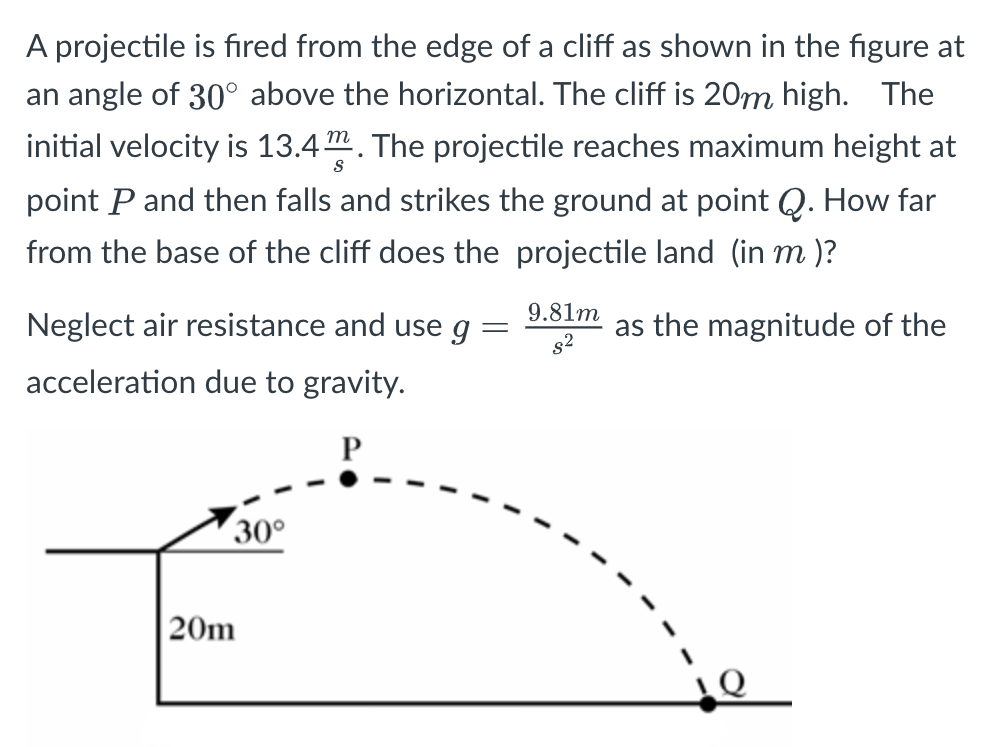A projectile is fired from the edge of a cliff as shown in the figure at an angle of 30∘ above the horizontal. The cliff is 20 m high. The initial velocity is 13.4 m/s. The projectile reaches maximum height at point P and then falls and strikes the ground at point Q. How far from the base of the cliff does the projectile land (in m)? Neglect air resistance and use g = 9.81m s2 as the magnitude of the acceleration due to gravity.
